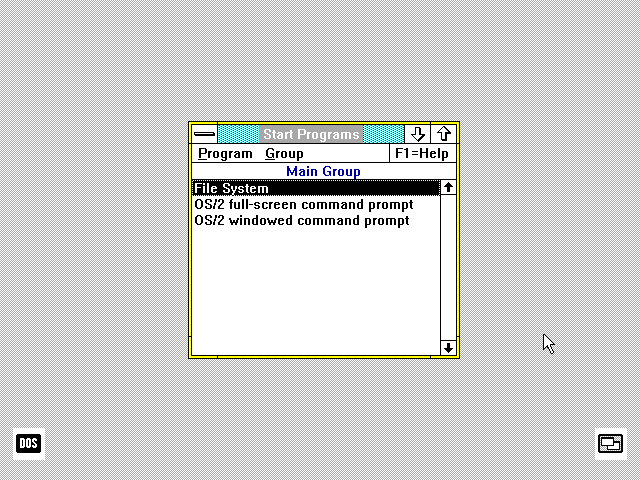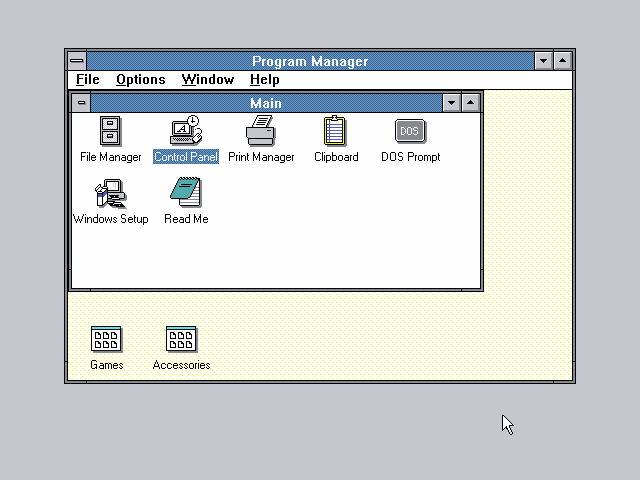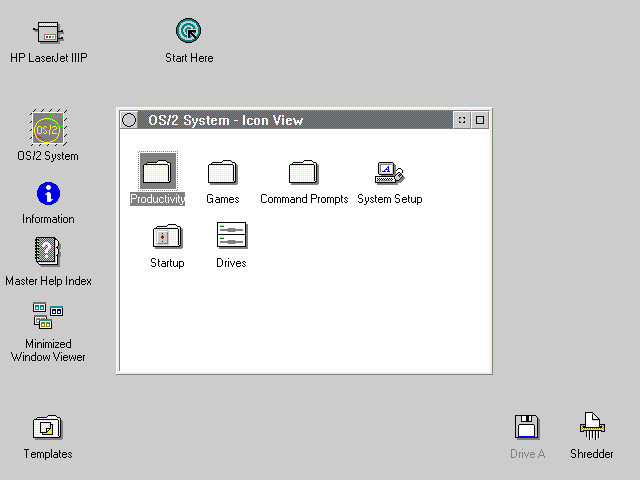IBM’s Clone War

IBM had spent a lot of time and money developing the PS/2 line of computers, which was released in 1987, slightly before OS/2 first became available. The company ditched the old 16-bit Industry Standard Architecture (ISA), which had become the standard among all clone computers, and replaced it with its proprietary Micro Channel Architecture (MCA), a 32-bit bus that was theoretically faster. To stymie the clone makers, IBM infused MCA with the most advanced legal technology available, so much so that third-party makers of MCA expansion cards actually had to pay IBM a royalty for every card sold. In fact, IBM even tried to collect back-pay royalties for ISA cards that had been sold in the past.
The PS/2s also were the first PCs to switch over to 3.5-inch floppy drives, and they also pioneered the little round connectors for the keyboard and mouse that remain on some motherboards to this day. They were attractively packaged and fairly reasonably priced at the low end, but the performance just wasn’t there. The PS/2 line started with the Models 25 and 30, which had no Micro Channel and only a lowly 8086 running at conservatively slow clock speeds. They were meant to get buyers interested in moving up to the Models 50 and 60, which used 286 chips and had MCA slots, and the high-end Models 70 and 80, which came with a 386 chip and a jaw-droppingly high price tag to go with it. You could order the Model 50 and higher with OS/2 once it became available. You didn’t just have to stick with the “Standard Edition" either. IBM also offered an “Extended Edition” of OS/2 that came equipped with a communications suite, networking tools, and an SQL manager. The Extended Edition would only run on true-blue IBM PS/2 computers—no clones were allowed to that fancy dress party.
These machines were meant to wrestle control of the PC industry away from the clone makers, but they were also meant to subtly push people back toward a world where PCs were the servants and mainframes were the masters. They were never allowed to be too fast or run a proper operating system that would take advantage of the 32-bit computing power available with the 386 chip. In trying to do two contradictory things at once, they failed at both.
The clone industry decided not to bother tangling with IBM’s massive legal department and simply didn’t try to clone the PS/2 on anything other than a cosmetic level. Sure, they couldn’t have the shiny new MCA expansion slots, but since MCA cards were rare and expensive and the performance was throttled back anyway, it wasn’t so bad to stick with ISA slots instead. Compaq even brought together a consortium of PC clone vendors to create a new standard bus called EISA, which filled in the gaps at the high end until other standards became available. And the crown jewel of the PS/2, the OS/2 operating system, was late. It was also initially GUI-less, and when the GUI did come with the release of OS/2 1.1 in 1988, it required too much RAM to be economically viable for most users.

As the market shifted and the clone makers started selling more and more fast and cheap 386 boxes with ISA slots, Bill Gates took one of his famous “reading week” vacations and emerged with the idea that OS/2 probably didn’t have a great future. Maybe the IBM Bear was getting ready to ride straight off a cliff. But how does one disentangle from riding a bear, anyway? The answer was "very, very carefully."
The Microsoft-IBM divorce
It was late 1989, and Microsoft was hard at work putting the final touches on what the company knew was the best release of Windows yet. Version 3.0 was going to up the graphical ante with an exciting new 3D beveled design (which had first appeared with OS/2 1.2) and shiny new icons, and it would support Virtual 8086 mode on a 386, making it easier for people to spend more time in Windows and less time in DOS. It was going to be an exciting product, and Microsoft told IBM so.


IBM still saw Microsoft as a partner in the operating systems business, and it offered to help the smaller company by doing a full promotional rollout of Windows 3.0. But in exchange, IBM wanted to buy out the rights to the software itself, nullifying the DOS agreement that let Microsoft license to third parties. Bill Gates looked at this and thought about it carefully—and he decided to walk away from the deal.
IBM saw this as a betrayal and circulated internal memos that the company would no longer be writing any third-party applications for Windows. The separation was about to get nasty.
Unfortunately, Microsoft still had contractual obligations for developing OS/2. IBM, in a fit of pique, decided that it no longer needed the software company’s help. In an apt twist given the operating system’s name, the two companies decided to split OS/2 down the middle. At the time, this parting of the ways was compared to a divorce.
IBM would take over the development of OS/2 1.x, including the upcoming 1.3 release that was intended to lower RAM requirements. It would also take over the work that had already been done on OS/2 2.0, which was the long-awaited 32-bit rewrite. By this time, IBM finally bowed to the inevitable and admitted its flagship OS really needed to be detached from the 286 chip.
Microsoft would retain its existing rights to Windows, minus IBM’s marketing support, and the company would also take over the rights to develop OS/2 3.0. This was known internally as OS/2 NT, a pie-in-the-sky rewrite of the operating system that would have some unspecified “New Technology” in it and be really advanced and platform-independent. It might have seemed that IBM was happy to get rid of the new high-end variant of OS/2 given that it would also encroach on mainframe territory, but in fact IBM had high-end plans of its own.
OS/2 1.3 was released in 1991 to modest success, partly because RAM prices finally declined and the new version didn’t demand quite so much of it. However, by this time Windows 3 had taken off like a rocket. It looked a lot like OS/2 on the surface, but it cost less, took fewer resources, and didn’t have a funny kind-of-but-not-really tie-in to the PS/2 line of computers. Microsoft also aggressively courted the clone manufacturers with incredibly attractive bundling deals, putting Windows 3 on most new computers sold.
IBM was losing control of the PC industry all over again. The market hadn’t swung away from the clones, and it was Windows, not OS/2, that was the true successor to DOS. If the bear had been angry before, now it was outraged. It was going to fight Microsoft on its own turf, hoping to destroy the Windows upstart forever. The stage was set for an epic battle.
Building the beast
IBM had actually been working on OS/2 2.0 for a long time in conjunction with Microsoft, and a lot of code was already written by the time the two companies split up in 1990. This enabled IBM to release OS/2 2.0 in April of 1992, a month after Microsoft launched Windows 3.1. Game on.

OS/2 2.0 was a 32-bit operating system, but it still contained large portions of 16-bit code from its 1.x predecessors. The High Performance File System (HPFS) was one of the subsystems that was still 16-bit, along with many device drivers and the Graphics Engine that ran the GUI. Still, the things that needed to be in 32-bit code were, like the kernel and the memory manager.
IBM had also gone on a major shopping expedition for any kind of new technologies that might help make OS/2 fancier and shinier. It had partnered with Apple to work on next-generation OS technologies and licensed NeXTStep from Steve Jobs. While technology from these two platforms didn’t directly make it into OS/2, a portion of code from the Amiga did: IBM gave Commodore a license to its REXX scripting language in exchange for some Amiga technology and GUI ideas, and included them with OS/2 2.0.
At the time, the hottest industry buzzword was “object-oriented.” While object-oriented programming had been around for many years, it was just starting to gain traction on personal computers. IBM itself was a veteran of object-oriented technology, having developed its own Smalltalk implementation called Visual Age in the 1980s. So it made sense that IBM would want to trumpet OS/2 as being more object-oriented than anything else. The tricky part of this task is that object orientation is mostly an internal technical matter of how program code is constructed and isn’t visible by end users.
IBM decided to make the user interface of OS/2 2.0 behave in a manner that was “object oriented.” This project ended up being called the Workplace Shell, and it became, simultaneously, the number one feature that OS/2 fans both adored and despised.
reader comments
245